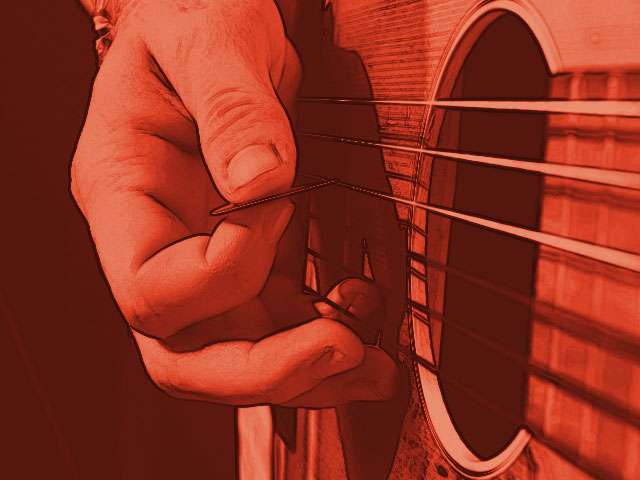- Published Sep 6, 2013 in Music 101
Al Gould offers sensible tips for developing some of your basic guitar strumming techniques
Guitar players at all levels of proficiency have been frustrated by the inability to get a good, clean strum. Here are a few tips that I have found helpful to improve your strumming and your overall guitar sound.
Positioning the Guitar:
Avoid holding the guitar too low, if you’re standing while playing. Adjust the guitar strap so that the guitar hits you across the chest and torso and so that both hands can access the guitar comfortably. If you’re seated, hold the guitar so that it leans towards you very slightly, once again making it easy for both hands to negotiate your instrument.
The Pick:
Grip the pick with your thumb and index finger so that approximately half the upper surface of the pick is covered. The thumb should make a 45 degree angle across the near side of the pick, stopping just short of the edge, while the index finger acts as a balancer for the thumb, positioning itself just to the right of center. The index finger should lean very slightly in a counter-clockwise direction towards the thumb. Your grip should be flexible, but strong enough to hold on and not drop the pick.
Using the Pick:
Exert enough pressure to start so that the pick leans into the string. You want to stroke the string rather than attack it. Practice picking all 6 strings one at a time slowly so that the pick has time to “lean” against the next string before actually playing it. The sensitive tip of the thumb and index finger should act as the physical center of the controlled force that you exert on the string. Feel that centeredness as you let gravity take you down into the next string.
Practicing the Strum:
To start, it is helpful to strum in one direction or the other, describing a slight arc with the right hand. Think of it as coming into the strum somewhat slowly with a slight push in the middle and then subsiding on the other end.The strumming motion is really an elliptical one. Imagine drawing a slight “figure 8” while strumming up and down. You want to contact the string on the upstroke of each half of the 8, coming from underneath it rather than directly across it. Give your motion the proportionate amount of follow through, but allow yourself enough time to get back to the next strum.
Accents:
Here’s an exercise to aid in practicing accenting your strums. Study the diagram below for a minute:
1 2 3 4 1 2 3 4 1 2 3 4 1 2 3 4
1 2 3 4 1 2 3 4 1 2 3 4 1 2 3 4
1 2 3 4 1 2 3 4 1 2 3 4 1 2 3 4
1 2 3 4 1 2 3 4 1 2 3 4 1 2 3 4
Take any basic chord. Starting on 1 with a down stroke, accent only the bold notes in each set of 4. Thus 2 will fall on an up stroke, 3 on the down and 4 on an up. This is a simple way to develop a sense of syncopation while strumming.
Remember to relax.
Everyone is in the same boat.
Even more advanced players have their moments.

